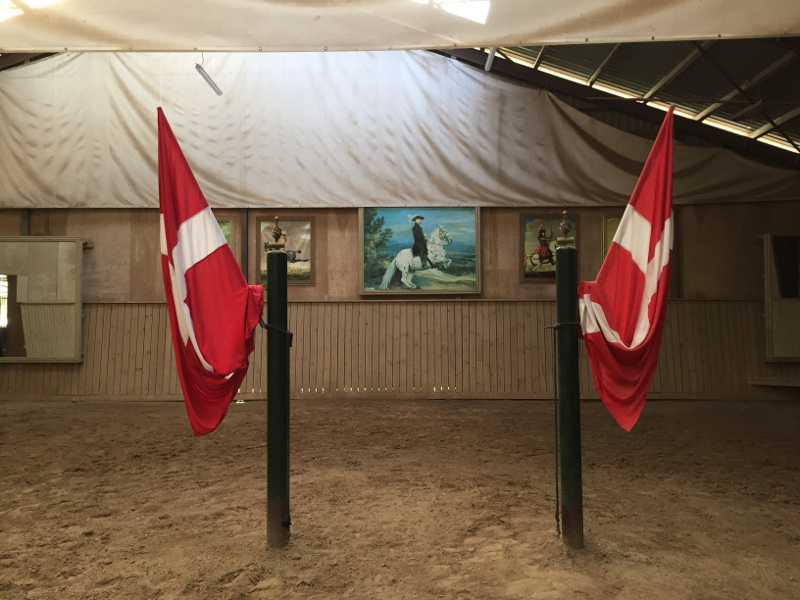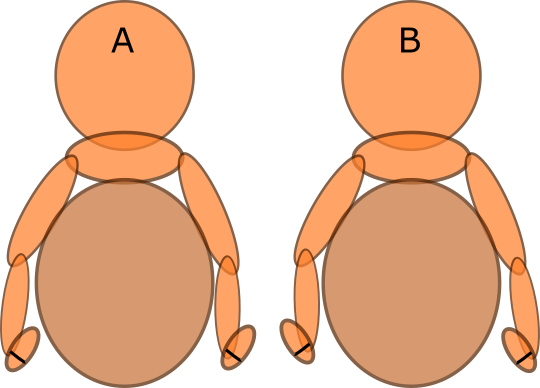Mjukhet, lätthet, det bara flyter fram. En härlig känsla som vi alla vill uppnå i vår träning. Hur gör vi? Jo vi börjar placera bogarna!
Vare sig vi tränar hästen från marken eller i ridningen vill vi låta kraften från hästens bakben gå igenom hela kroppen, utan att “fastna” på vägen. Detta kräver förstås en lösgjord häst och att bakbenen kliver in till tyngdpunkten, under ryttarens sits. I början är detta lättast att uppnå genom att placera bogarna så att frambenen kliver in under hästens mule. Tänk dig ett runt järnvägsspår, där den inre järnvägsskenan representerar hästens inre benpar och den yttre järnvägsskenan representerar hästens yttre benpar. Vad vi vill uppnå med vår träning är att få hästen att spåra, ytter benpar i ett spår och inner benpar i ett spår. Alla hästens hovar går i samma riktning. Vi måste ha koll på vårt mentala inre järnvägsspår och känna och titta på bogarna, kliver inner framben rakt fram eller faller det inåt eller utåt? Hur är det med det yttre frambenet? Faller det inåt eller utåt? När vi har funderat på hur det förhåller sig kan vi försöka åtgärda problemet, och få det framben som faller iväg att röra sig framåt igen.

I ridningen placerar vi frambenen genom att använda framsidan av våra inre lårmuskler. Om hästens framben faller utåt är det ett yttre lår som vi använder och om frambenen faller inåt är det en inre lårhjälp som används. Dock är det viktigt att lägga på hjälperna i rätt takt! Hjälpen måste ges i den takt där hästen lyfter på benet. Ger jag hjälpen när hästen står på benet kan den inte svara, utan benets riktning kan bara ändras när det är lyft från marken. Om jag till exempel känner att det inre frambenet faller lite utåt, lägger jag till framsidan av mitt yttre lår i takt med att det inre frambenet lyfts.
… ha inte så bråttom att få hästen mjuk och fin att du inte hinner känna efter vad det är som händer.
När vi har placerat hästens bogar så att kraften bakifrån går rakt igenom hästen kommer vi att uppleva en mjukhet och lätthet i bogarna. Detta är ett kvitto på att hästen rör sig riktigt. Så fort man känner en tunghet i bogarna är det ett tecken på att hästens bakben inte gör sitt jobb ordentligt och vi får återigen känna efter vad som händer och korrigera därefter. Just att känna vad som är fel är något som vi måste öva på, och om man inte känner direkt vad som är fel får man experimentera lite. Om det känns så här, och jag provar att flytta det inre frambenet lite utåt, blir resultatet en lätthet eller blir det bara ännu tyngre? Om det blev värre kanske jag provar att flytta det inre frambenet utåt istället. När du har hittat det sätt som gjorde ridningen mjukare och lättare gör du en liten mental notering. När hästen kändes så här, korrigerade jag det genom att flytta det inre frambenet utåt och då blev hästen mjuk igen. Då vet du vad du ska göra nästa gång hästen känns sådär igen. Viktigt är förstås att försöka korrigera hästen på ett sätt i taget. Om man slänger på alla hjälper man kan på en gång och något fungerade och gjorde hästen mjuk så har man ju inte själv lärt sig vad det var som hjälpte. Pröva en hjälp i taget och ha inte så bråttom att få hästen mjuk och fin att du inte hinner känna efter vad det är som händer.

